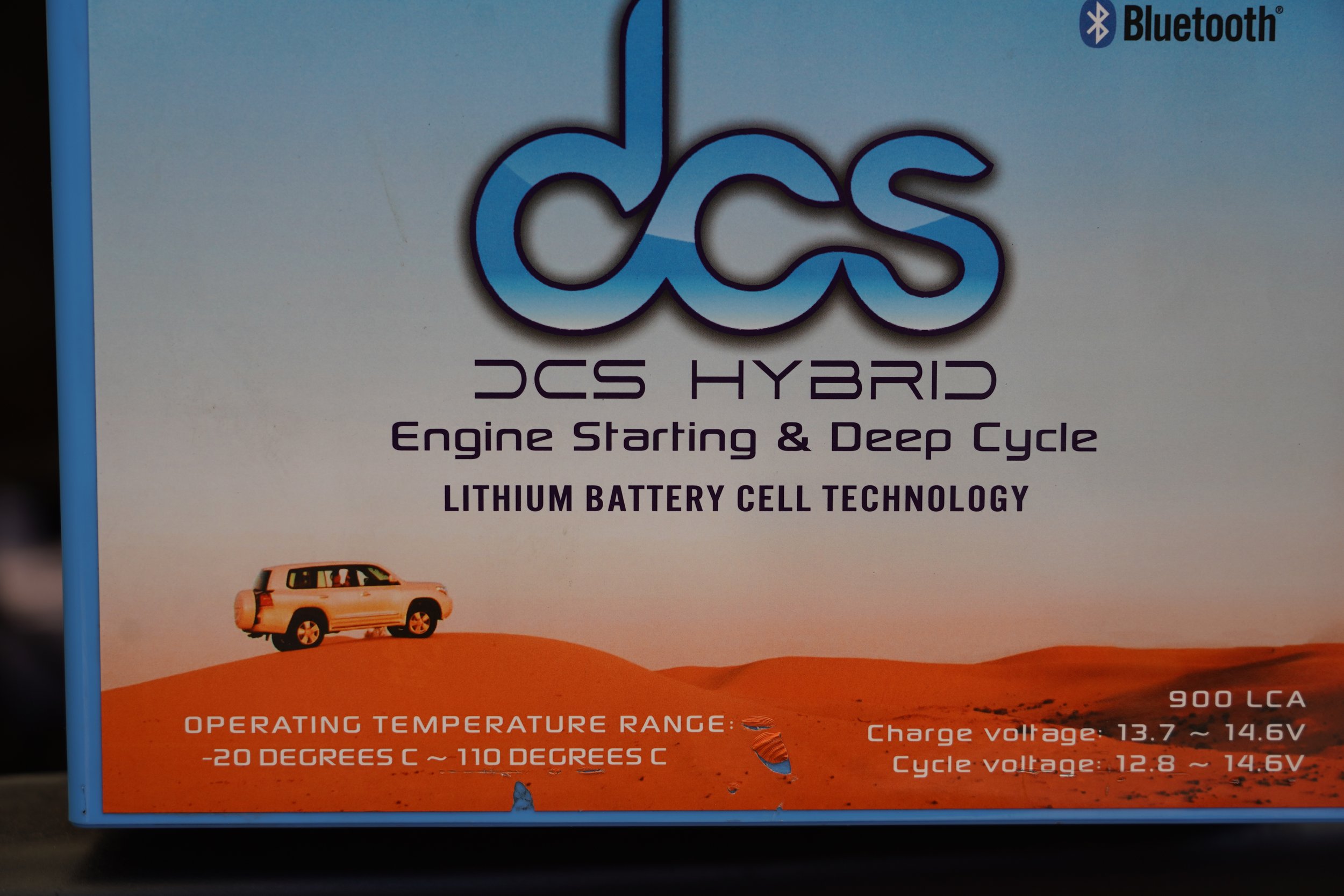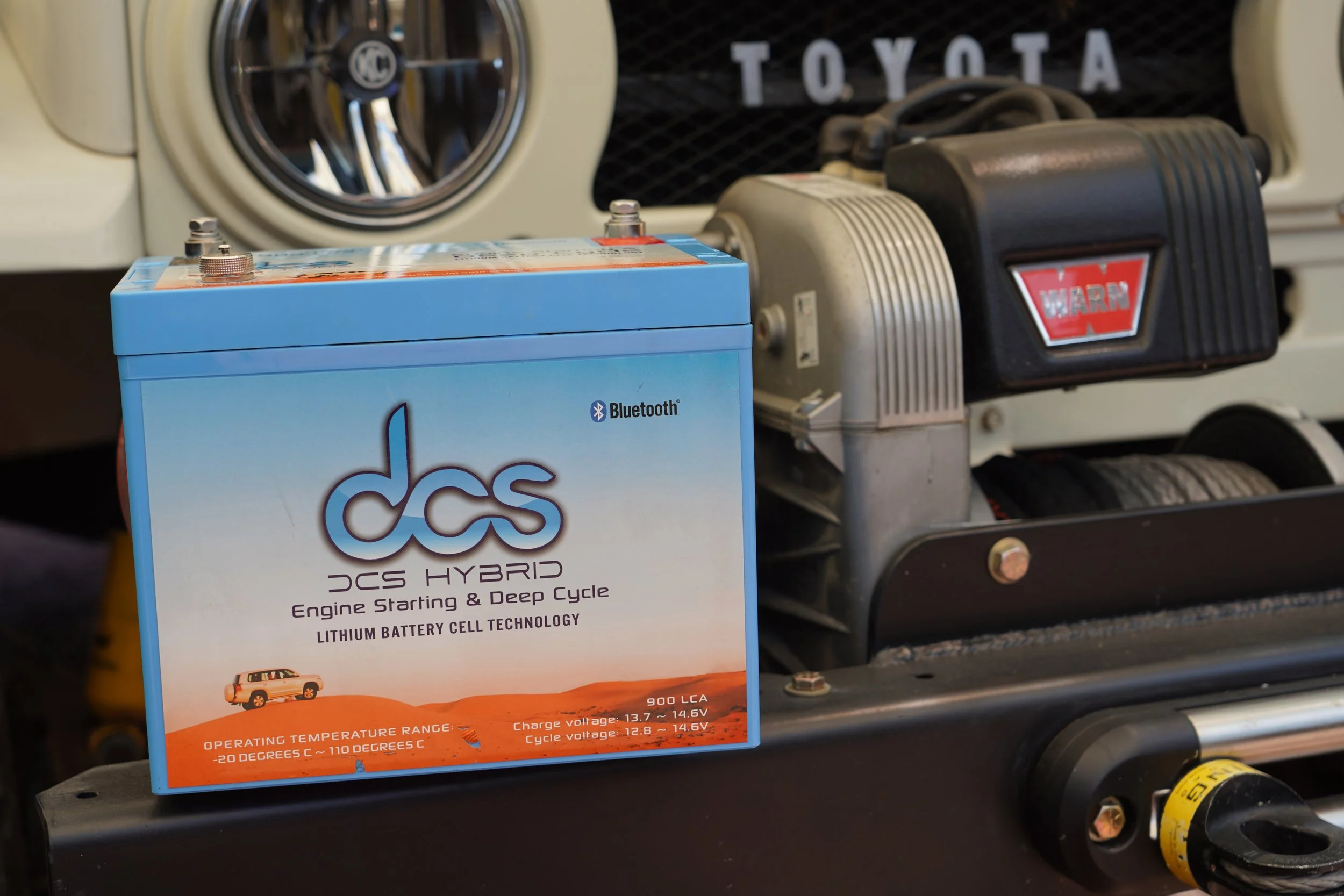High-temperature-tolerant, winch-capable LiFePO4 batteries from DCS
Back in the late 1990s I wrote a review in Outside magazine comparing compact 35mm cameras with the new generation of digital cameras, which were just becoming practical alternatives for casual use. (Some of them employed sensors that were breaking the miraculous one-megapixel barrier.)
At the end of the review, I noted that digital images could not match those from 35mm film—but I predicted that someday they would, and that digital photography might eventually eclipse film imagery.
The editors cut out the prediction part because, they said, it was pure conjecture and they didn’t want to annoy advertisers who manufactured only film cameras.
That was then; this is now: I have my own site and no editor to veto predictions. But I think my next one is easy: For the serious overland traveler, LiFePO4 or LFP (Lithium Iron Phosphate, or just “Lithium”) batteries are on the way to becoming the standard power source for “house” batteries—that is, those used to run fridges, lights, inverters, etc.—and probably for starting and winching use as well.
The reason is not the one most commonly cited—weight savings—even though replacing two AGM batteries with Antigravity LiFePO4 starting and deep-cycle batteries in our HZJ75 Troop Carrier almost exactly offset the weight of our National Luna Weekender fridge/freezer. The real advantage to lithium cells is their far higher energy density and flat power delivery compared to AGM or SLA batteries, combined with a discharge/recharge lifespan far, far longer than AGM batteries—enough to completely amortize the higher initial cost and then some. On top of that is their ability to accept charge at a far higher rate than possible with lead-based batteries. Please read this first if you’re not familiar with these characteristics.
Note that I wrote “on the way to becoming,” not, “have become,” because until now LiFePO4 technology has had a couple of significant drawbacks compared to AGM batteries.
I don’t count the higher price, since as mentioned a buyer can expect to recover the difference fully in extra lifespan. The two main drawbacks of current lithium batteries are, 1) their sensitivity to temperature extremes, both hot and cold, and, b) their inability to deliver the kind of extended high amperage needed for winching use.
However, just as with digital imaging, we can expect manufacturers to continue innovating and expanding the capabilities of LiFePO4 technology. And one of the first companies doing so is the Australian company DCS (Deep Cycle Systems), distributed in the U.S. by Carl Jonsson at Tiktaalik. I recently had a couple of weeks with one of their combination starting/deep-cycle batteries, and hope to do a full review of a dual-battery system this fall.
What’s improved on the DCS battery? Most LiFePO4 batteries can only accept a charge at temperatures between about 25ºF and 125ºF (-4ºC to 52ºC), and can only discharge (produce power) at temperatures between -4ºF and 130ºF (-25ºC to 55ºC). The DCS battery has similar lower limits, but it will accept charge at temperatures up to 149ºF (65ºC) and can produce power at a scorching 230ºF (110ºC). I consider that a massive jump in performance parameters, especially if, as I, you live in a desert.
Additionally, DCS offers an “Extreme” version of their basic model, designed for “military and naval applications,” and advertised as “well suited for engine bay installation and winching applications.” That would be another massive jump in performance. I can hardly wait to hook up the FJ40’s Warn 8274 to one of those and give it a workout on a training weekend.
As is the norm with so many products recently—especially those produced on other continents—Jonsson is striving to ramp up availability on a full line ranging from a single 50AH battery to a 260AH dual system. Find out more and keep an eye on incoming stock at Tiktaalik, here.



